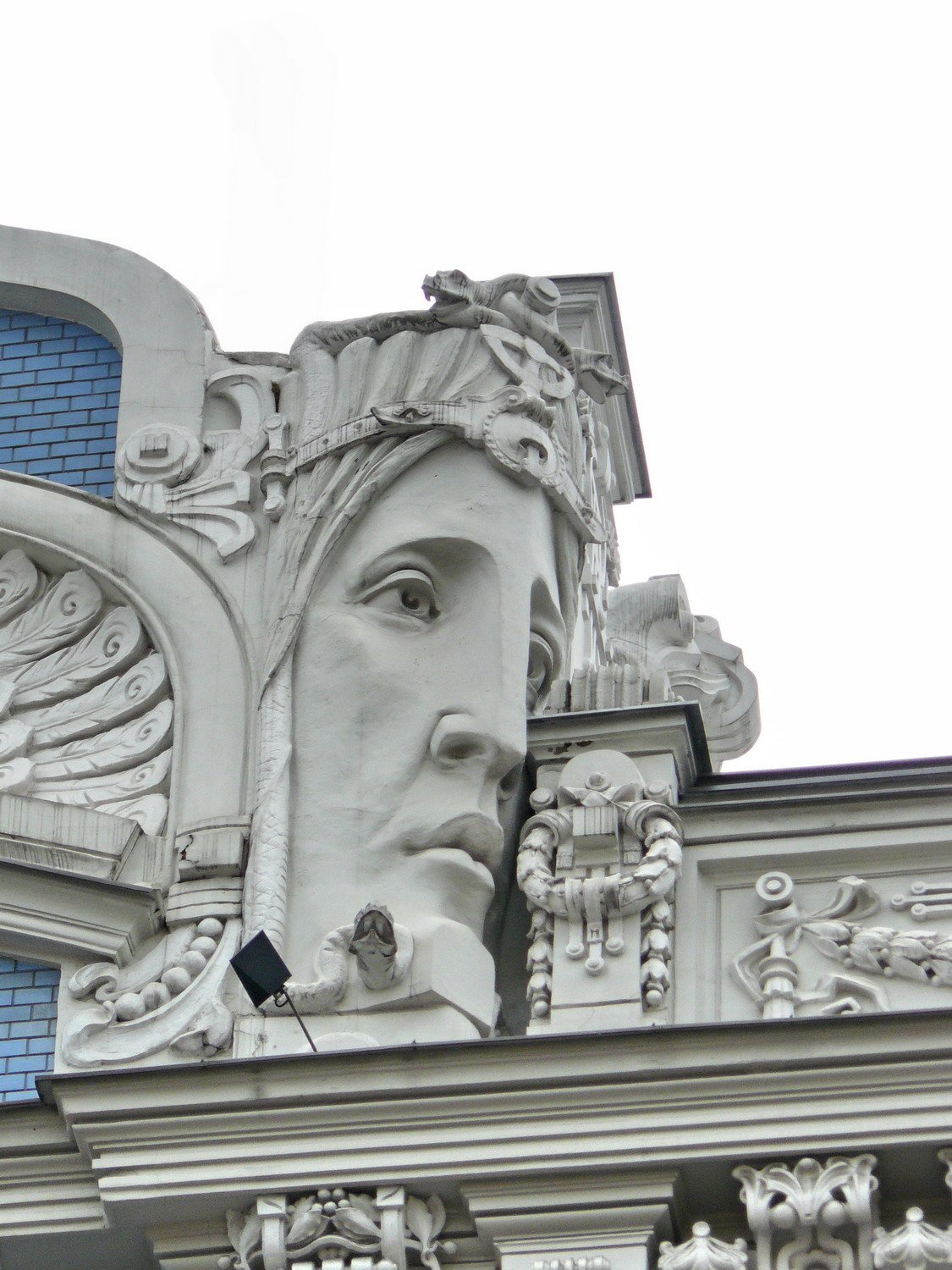#4295. Art Nouveau Anthropomorphic Facade: Sculptural Face as an Architectural Dominant
The image showcases an expressive fragment of an Art Nouveau (Jugendstil) facade. The focal point of the composition is a large sculptural female face, organically integrated into the architectural structure of the building. The face is executed as a three-dimensional high relief and surrounded by decorative elements characteristic of the aesthetic principles of the late 19th to early 20th century.
The architectural composition is distinguished by its plastic forms and rich decorative details. Around the central element are elaborate ornaments including floral motifs and geometric patterns. Particularly noteworthy is the refined execution of details such as the wreath above the face and the decorative garlands on its sides. Of special interest is the blue mosaic or tile insert to the left of the face, creating a striking contrast with the white color of the main facade.
The flowing lines, asymmetrical composition, and organic forms vividly demonstrate adherence to the Art Nouveau style, which sought to synthesize architecture and fine art. Such anthropomorphic facade elements were especially popular in the architecture of this period, symbolizing the union between humans and the architectural environment.
